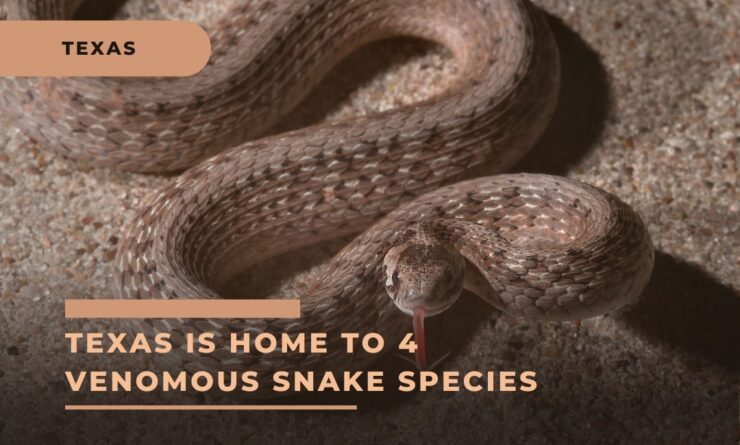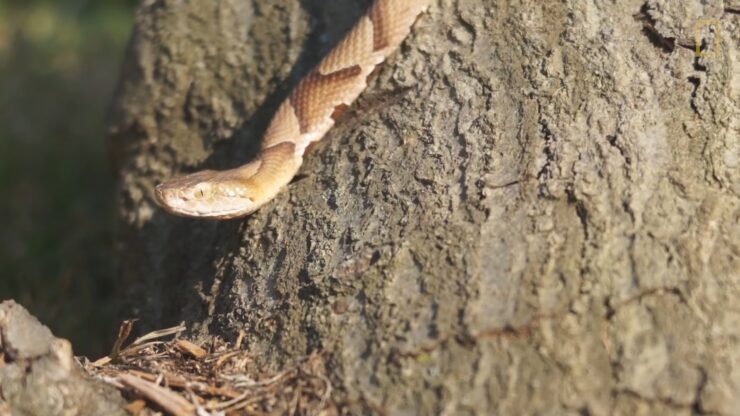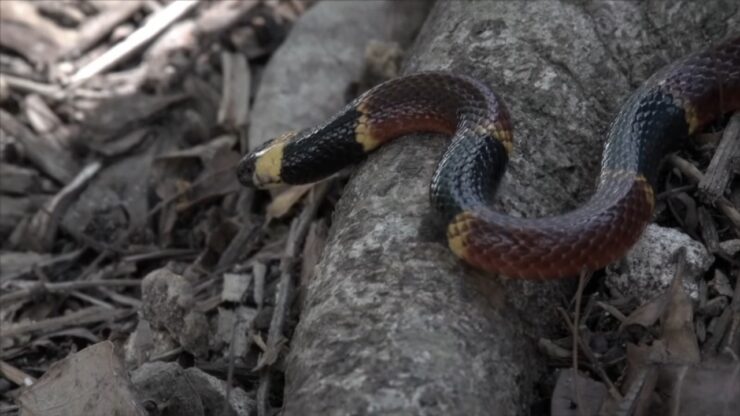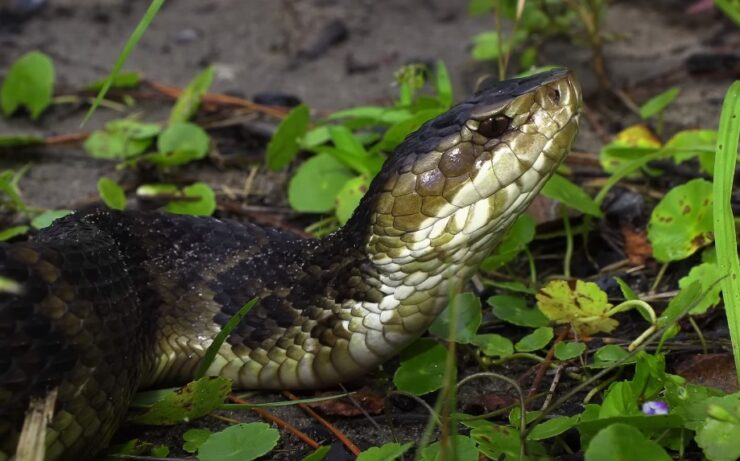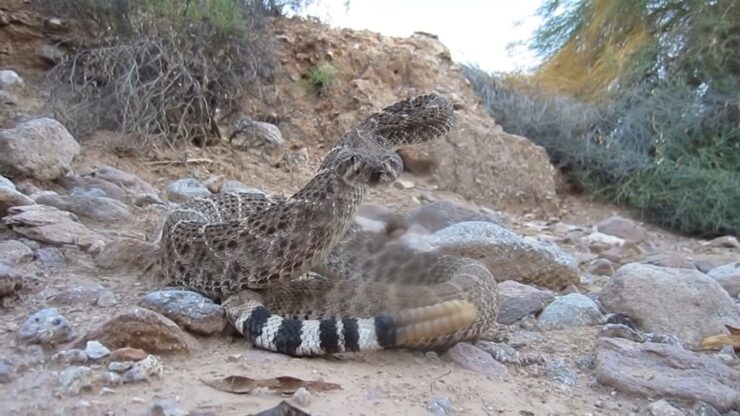During the summer, when the sweltering heat of the day gives way to cooler evenings, snakes, like humans, are more likely to be out and about, increasing the chances of an encounter.
Out of the 105 species or subspecies of snakes that inhabit Texas, only four are venomous and present potential harm to humans, as per the Texas Parks and Wildlife Department.
Characteristics of Venomous Snakes
1. Copperheads
- Physical Characteristics: Copperheads are recognized by their light-colored bodies and reddish-brown circular patterns. They typically grow to about 2 feet long.
- Habitat: They inhabit humid, wooded lowlands and rocky areas, which provide them with ample cover and a rich supply of prey.
- Venom and Bite: Despite being venomous, their bites rarely cause human fatalities due to their short fangs and limited venom quantity. However, a bite from a Copperhead can still cause severe pain and should be treated immediately.
- Behavior: Copperheads are primarily nocturnal and are known to be less aggressive than other venomous snakes. However, they will not hesitate to strike if threatened or provoked.
2. Coral Snakes
-
- Physical Characteristics: Coral snakes are identified by their distinctive red, yellow, and black body rings. They typically grow to about 2½ feet in length.
- Habitat: These snakes are found in woodlands and canyons, where they burrow underground or hide under leaf litter.
- Venom and Bite: Possessing one of North America’s most potent venoms, a bite from a coral snake can be life-threatening. However, they are generally shy snakes and will only bite humans in self-defense.
- Behavior: Coral snakes are reclusive and spend most of their time hiding. They are also noted for their unique tail-shaking behavior, which can confuse predators into thinking it’s the snake’s head.
3. Cottonmouths/Water Moccasins
-
-
- Physical Characteristics: Cottonmouths are usually dark brown, olive green, or black, with wide, dark bands across their bodies. They can grow up to about 3½ feet long.
- Habitat: Also known as water moccasins, they prefer aquatic habitats such as swamps, lakes, and rivers.
- Venom and Bite: Their bites account for 7% of all Texas snakebite cases and can cause significant tissue damage.
- Behavior: When threatened, Cottonmouths will open their mouths wide, showing the white interior that gives them their name. They are more aggressive than some other species and will stand their ground when threatened.
-
4. Western Diamondback Rattlesnakes
-
-
-
- Physical Characteristics: Recognizable by their brown bodies with dark brown diamond-shaped markings and distinctive rattles, these snakes can reach lengths of 4 feet, with some individuals extending up to 7 feet.
- Habitat: Western diamondbacks are highly adaptable and can be found in deserts, grasslands, forests, and rocky hillsides.
- Venom and Bite: Their venom is extremely potent, and they account for more deaths in the U.S. than any other snake species.
- Behavior: These snakes are known for their aggressive nature when threatened. They are most active at night, hunting for a variety of prey such as rodents and birds.
-
-
The Ecological Importance of Snakes
Experts in herpetology strongly discourage the killing of snakes, including venomous ones. Snakes play a critical role in many ecosystems, feeding on insects and other carriers of diseases and preying on rodents that cause damage to gardens and structures.
Safe Coexistence with Snakes
Most snake bites occur when humans attempt to kill or remove snakes. If you cross paths with a snake, remain still until you determine how best to avoid aggravating it. For homeowners keen on keeping snakes away from their properties, removing potential hiding places is an effective measure.
First Aid and Medical Treatment for Snake Bites
In case of a venomous snake bite, the Austin-Travis County EMS provides several measures to help prevent it from becoming lethal. Keep the bitten area at or below heart level and apply ice or cold packs to minimize swelling. Contact your healthcare provider or dial the poison help line at 800-222-1222 for guidance.
Snakebite Prevention Education and Awareness
Public awareness and education about snakebite prevention are vital in regions with venomous snakes. Understanding snake behavior, identifying venomous species, and knowing the correct first aid measures can significantly reduce snakebite incidents and fatalities.
The Role of Professional Snake Removal Services
For individuals uncomfortable with dealing with snakes, professional snake removal services are a safe and humane option. These experts can safely remove and relocate snakes, minimizing the risk of snakebites. They can also provide advice on snake-proofing properties and educate homeowners on living harmoniously with these often misunderstood creatures.
Final Words
In summary, while the thought of encountering a venomous snake can be frightening, understanding their characteristics, behavior, and the vital role they play in our ecosystem can greatly reduce unnecessary fear and harm.
Copperheads, Coral Snakes, Cottonmouths, and Western Diamondback Rattlesnakes, the four venomous snake species in Texas, all have distinct features and behaviors which, when known, can assist in safe interactions.
Snakes play a pivotal ecological role, controlling pests and disease carriers, highlighting the importance of their preservation. The key to peaceful coexistence lies in education and awareness, especially in snake-prone areas. Knowing how to act around snakes and applying appropriate preventative measures can minimize potential encounters and snakebite incidents.
Source:
https://news.yahoo.com/texas-home-4-venomous-snake-180035855.html

